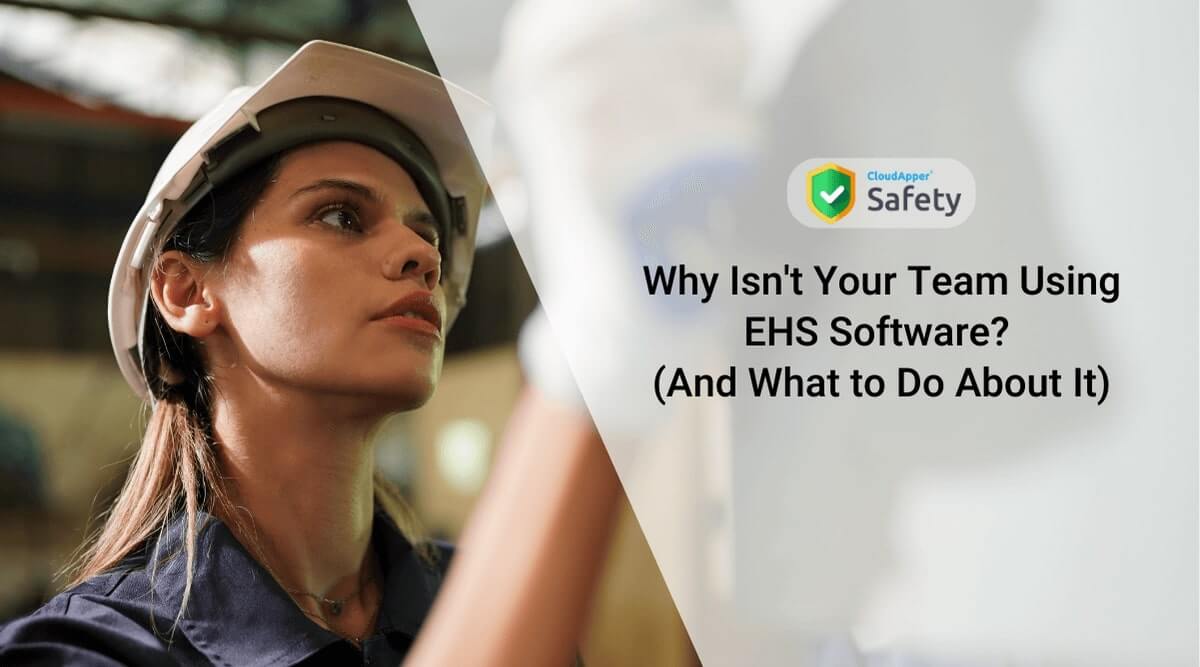Table of Contents
Purchasing EHS/EH&S software is a win-win situation for everyone. By replacing spreadsheets, EHS teams will save time and be able to focus on actions that will make the organization safer and more sustainable. Senior executives will benefit from enhanced visibility into company performance, which will allow them to make better and more timely decisions.
Nonetheless, many teams struggle with asking for and receiving approval for these projects. Here are ten crucial things to think about when you prepare your business plan for management:
1) Align your request with the company’s objectives
Think about how an EHS/EH&S software system can help you achieve the goals you’ve set for yourself. Is it, for instance, a goal for your company to reduce carbon emissions? How about reducing your running expenses? These considerations should not be overlooked. You want to demonstrate to decision-makers how your request will assist them to meet their objectives.
2) Make your case with data
CEOs and CFOs want factual data, not a sales presentation, when considering whether or not to invest in a new software system. So, provide them all the facts, figures, and statistics they need to make an informed buying decision.
3) Calculate the ROI
Similarly, management will want to know what kind of ROI (return on investment) they can expect. The return on investment (ROI) is essentially a measure of the value that software provides in relation to its cost. EHS software can help businesses save money by increasing productivity, improving compliance, and reducing unwelcome incidents, all of which add up to significant savings.
4) Demonstrate what it costs to do nothing
Purchasing new technology is a significant investment. Managers and CEOs face numerous decisions every day, so it’s understandable if they put off making an EHS software selection. By “deciding not to decide,” they are foregoing cost-cutting opportunities and putting their business at risk without even realizing it. This article illustrates why delaying EHS software implementation will cost you more money in the long run.
5) Share success stories from businesses similar to yours
Case studies are a very useful tool. Instead of simply discussing a software system, case studies demonstrate how it has been effectively implemented by other businesses. Case studies can also assist managers in visualizing how the same technology could be used by their company. The majority of vendors would gladly share case studies with you, which you may utilize to back up your business plan.
6) Make sure you time your request correctly
When your employer is preoccupied with another issue, asking for new software is a guaranteed formula for disaster. Not only will you most certainly be rejected, but you’ll also jeopardize your future prospects of receiving funding for other projects. So, when it comes to the EHS software discussion, timing is crucial.
It’s usually a good idea to start talking about buying a new EHS/EH&S software system in the fall. Because most organizations are preparing their budgets for the new year, approaching your manager to discuss EHS software at this time is a good idea.
7) Anticipate possible objections
Even if you explain your business plan successfully, most managers will have some reservations or reasons for not saying yes. Perhaps they believe it is too costly. Or they are concerned that making the changeover will be too difficult. The degree to which you anticipate and address these problems can determine whether you succeed or fail.
8) Minimize the risk
All company decisions carry some element of risk, whether it’s a technological investment, a new hire, or an acquisition. If you can reduce the risks, though, it will be a lot easier for management to say yes. Choosing the correct software is one of the most effective methods to reduce risk. A $10 no-code EHS/EH&S software is a far better bet than a solution that costs upwards of $100K.
9) Don’t tell, just show
Sometimes the best way to persuade your boss that you need software is to let them see for themselves what it can accomplish. A demo can assist your Director or VP in visualizing the problem that the product solves and why you require it. It also gives them the option to directly ask the vendor their questions.
10) Find out the reason if the answer is no
Management may refuse a software request for a variety of reasons, including budget issues, scheduling, and even other issues you may be unaware of. Instead of abandoning the idea, it’s OK to gently inquire as to why your approach was rejected. Once you understand why your request was turned down, you might be able to come up with a solution that works for everyone.
Steps to take next
It’s not always easy to get management’s permission for EHS/EH&S software, but it’s definitely worth the effort. You’ll be well-positioned to get buy-in for your software endeavor if you follow these guidelines. CloudApper Safety’s team is available to help you every step of the way.
What is CloudApper AI Platform?
CloudApper AI is an advanced platform that enables organizations to integrate AI into their existing enterprise systems effortlessly, without the need for technical expertise, costly development, or upgrading the underlying infrastructure. By transforming legacy systems into AI-capable solutions, CloudApper allows companies to harness the power of Generative AI quickly and efficiently. This approach has been successfully implemented with leading systems like UKG, Workday, Oracle, Paradox, Amazon AWS Bedrock and can be applied across various industries, helping businesses enhance productivity, automate processes, and gain deeper insights without the usual complexities. With CloudApper AI, you can start experiencing the transformative benefits of AI today. Learn More


















